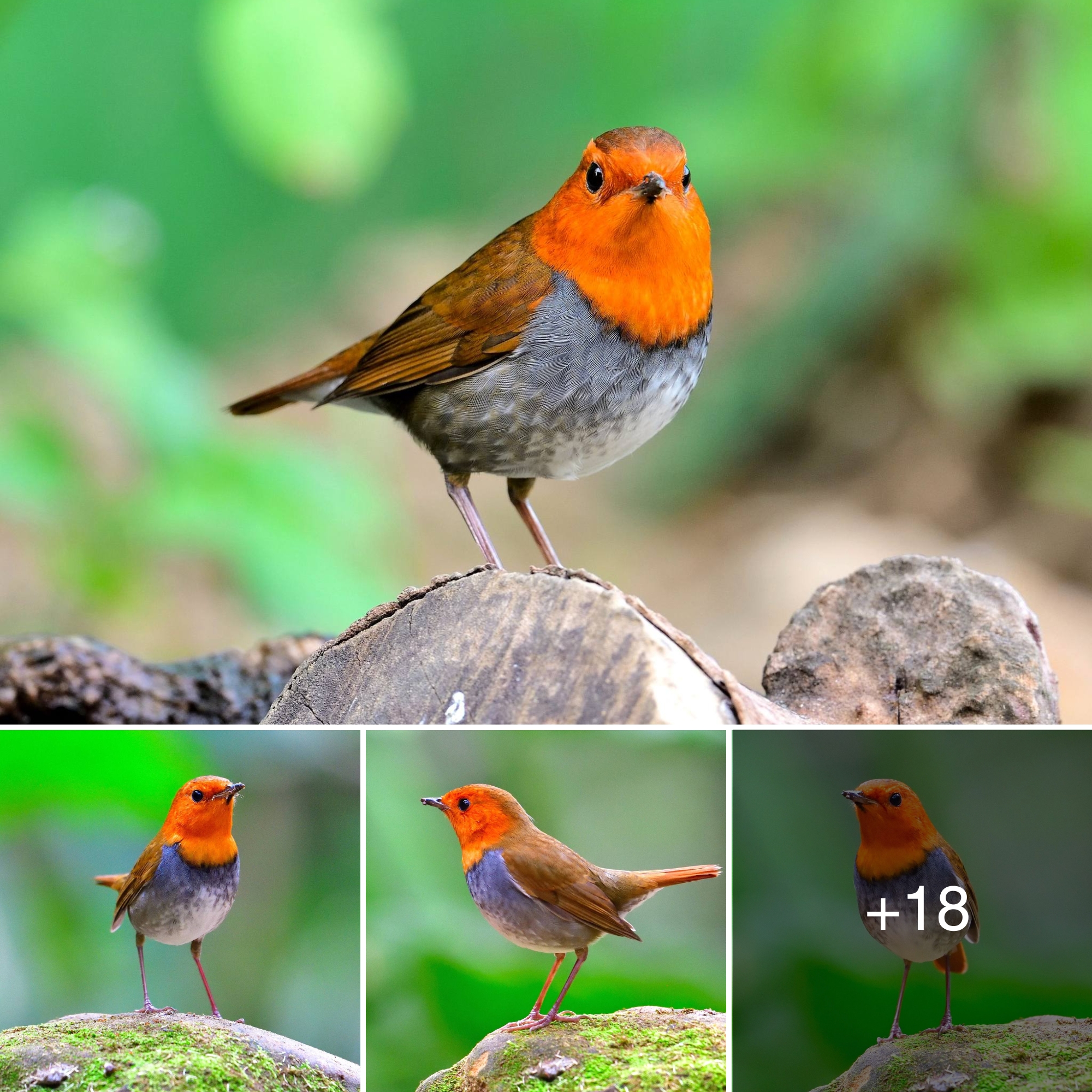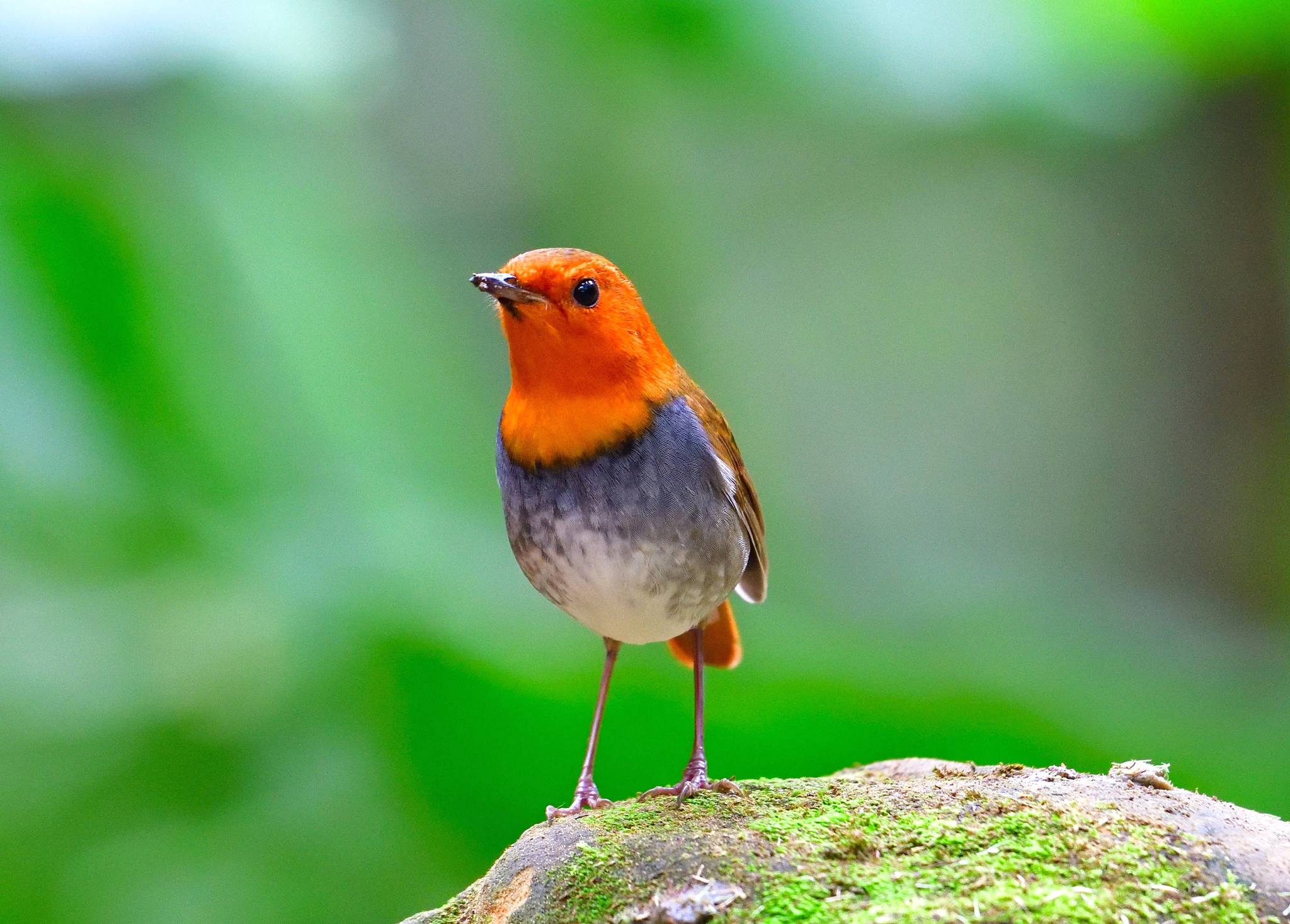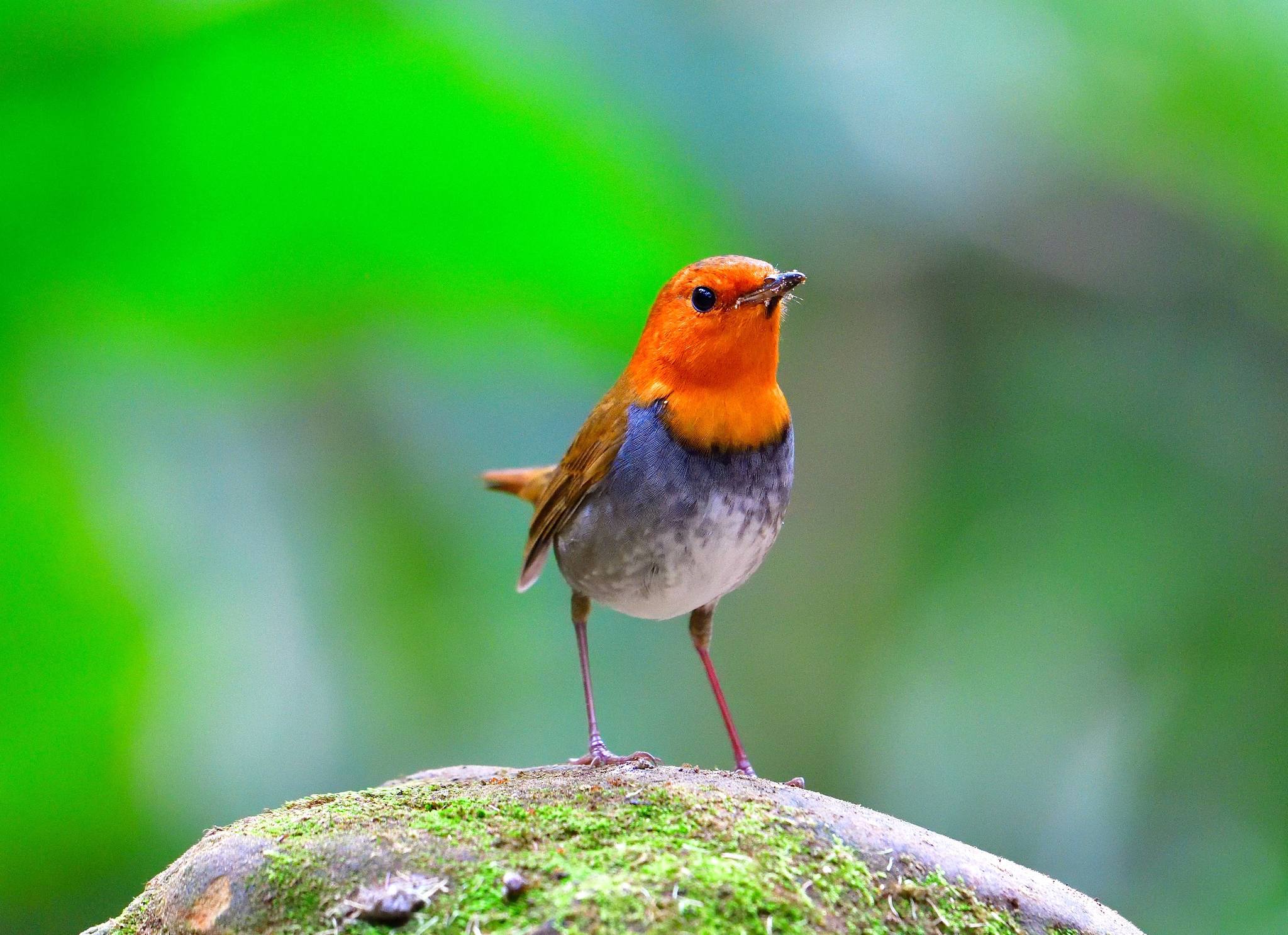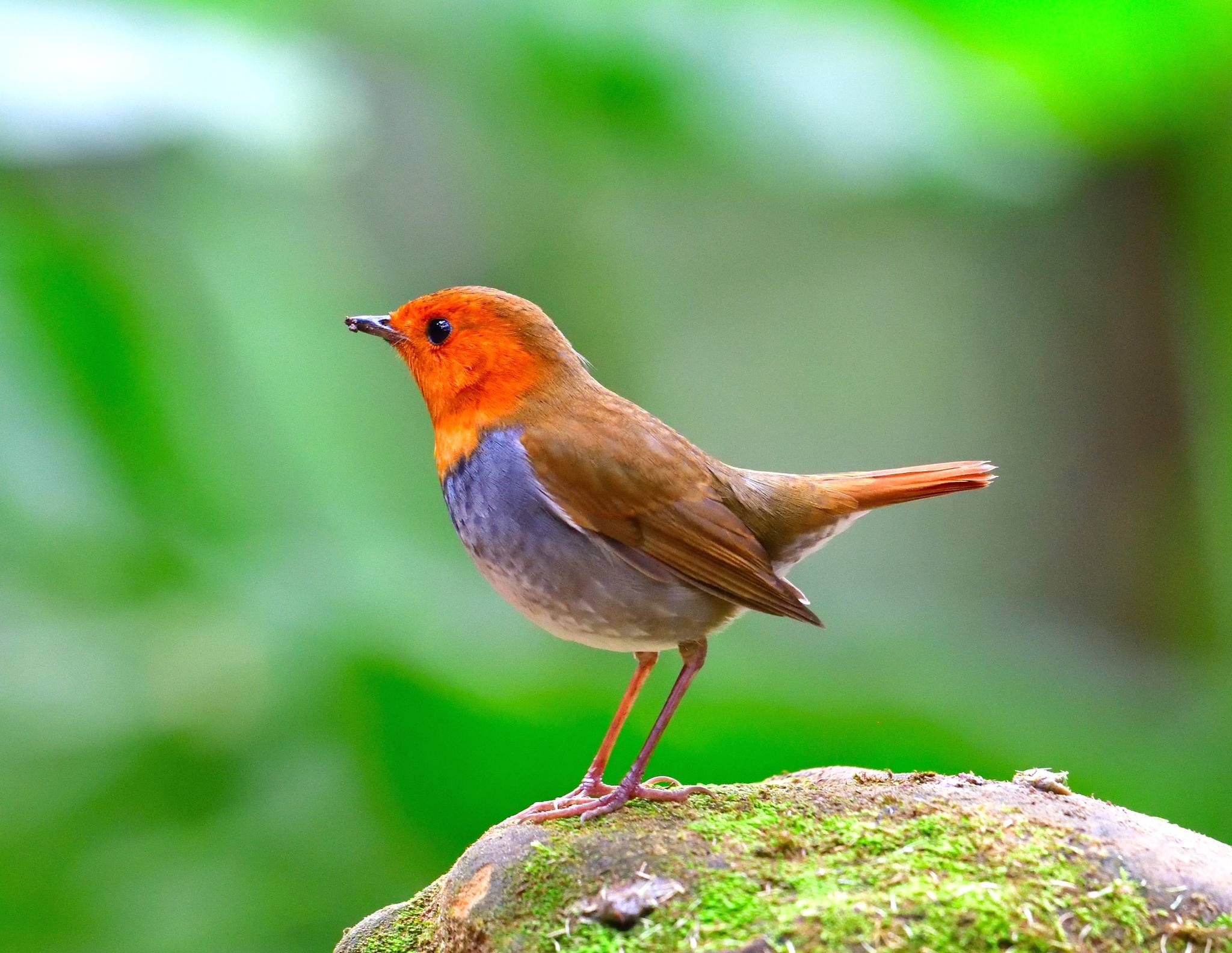The Japanese robin (Larvivora akahige), formerly known as Erithacus akahige or Komadori, is a small bird species native to Japan and parts of the Russian Far East. Its range spans from the southern regions of the Kuril and Sakhalin Islands through the entirety of Japan.

Japanese robins are known for their distinctive appearance and behaviors. They have a compact build with a round body, short tail, and a striking red breаst that contrasts sharply with their grayish upperparts. This coloration makes them easily recognizable in their forested habitats, where they prefer dense undergrowth, mixed forests, and woodland edges.
These birds are primarily insectivorous, feeding on a variety of insects, spiders, and small invertebrates found among the leaf litter and vegetation. They are also known to consume berries and fruits opportunistically, particularly during the non-breeding season when insects may be less abundant.




During the breeding season, which typically spans from April to July, Japanese robins construct cup-shaped nests in low shrubs or dense vegetation. The female lays a clutch of eggs, which she incubates while the male assists in feeding her. Both parents contribute to raising the chicks until they fledge and become independent.
The conservation status of the Japanese robin is considered to be of Least Concern, as it has a wide distribution and appears to be stable across its range. However, like many forest-dependent species, it faces threats from habitat loss and fragmentation due to forestry practices and urbanization. Conservation efforts focus on preserving suitable habitats and raising awareness about the importance of maintaining healthy forest ecosystems for the survival of this charming bird species.